Abstract
Weight and collagen content of the mesometrium, that part of the reproductive tract which lies between the uterus and the body wall, were measured in the rat, throughout pregnancy and post-partum. Both the weight and the collagen content increased significantly during pregnancy and decreased rapidly after parturition, the collagen content halving in around four days. The changes were almost entirely in the part of the mesometrium between the main longitudinal blood vessels and the uterus. At any given stage of pregnancy, the larger the uterus, the larger were both the weight and collagen content of the mesometrium. In rats pregnant in only one uterine horn the mesometrium associated with the barren horn showed no changes in weight or collagen content during pregnancy. Removal of fetuses from one uterine horn reversed the growth of the mesometrium associated with that horn, but not the growth of the mesometrium associated with the other (pregnant) horn. Cutting the attachment to the body wall prevented mesometrial growth during pregnancy although the tissue remained attached to the uterus, with its blood supply and the metrial gland intact. These data suggest that mesometrial growth in pregnancy is stimulated by stretch associated with the pregnant uterine horn.
Full text
PDF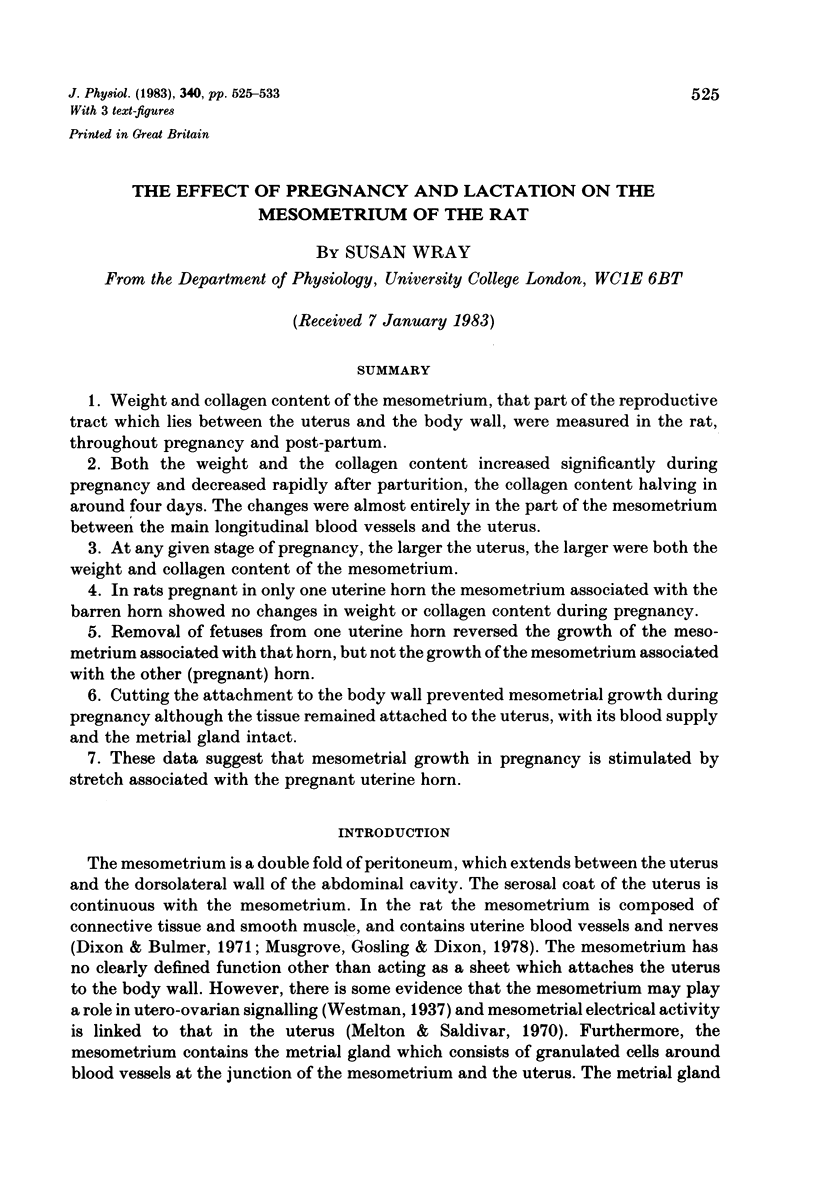
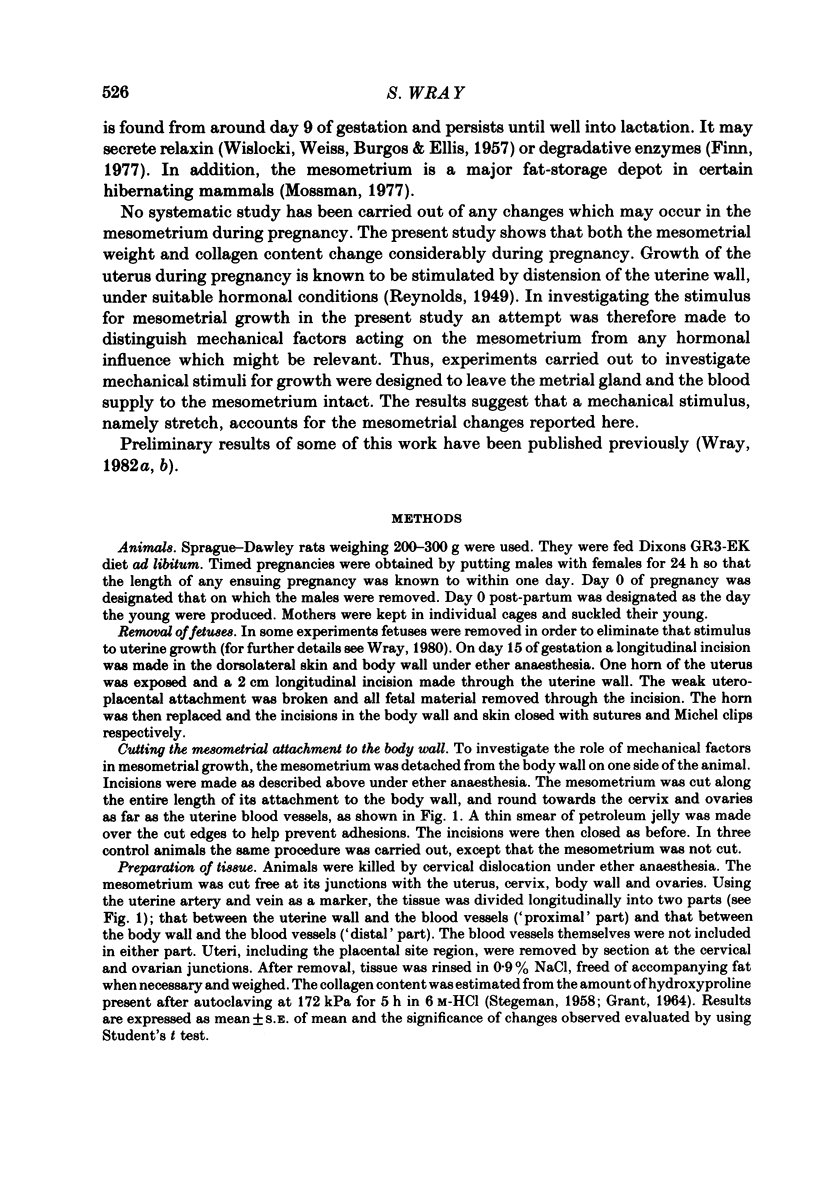
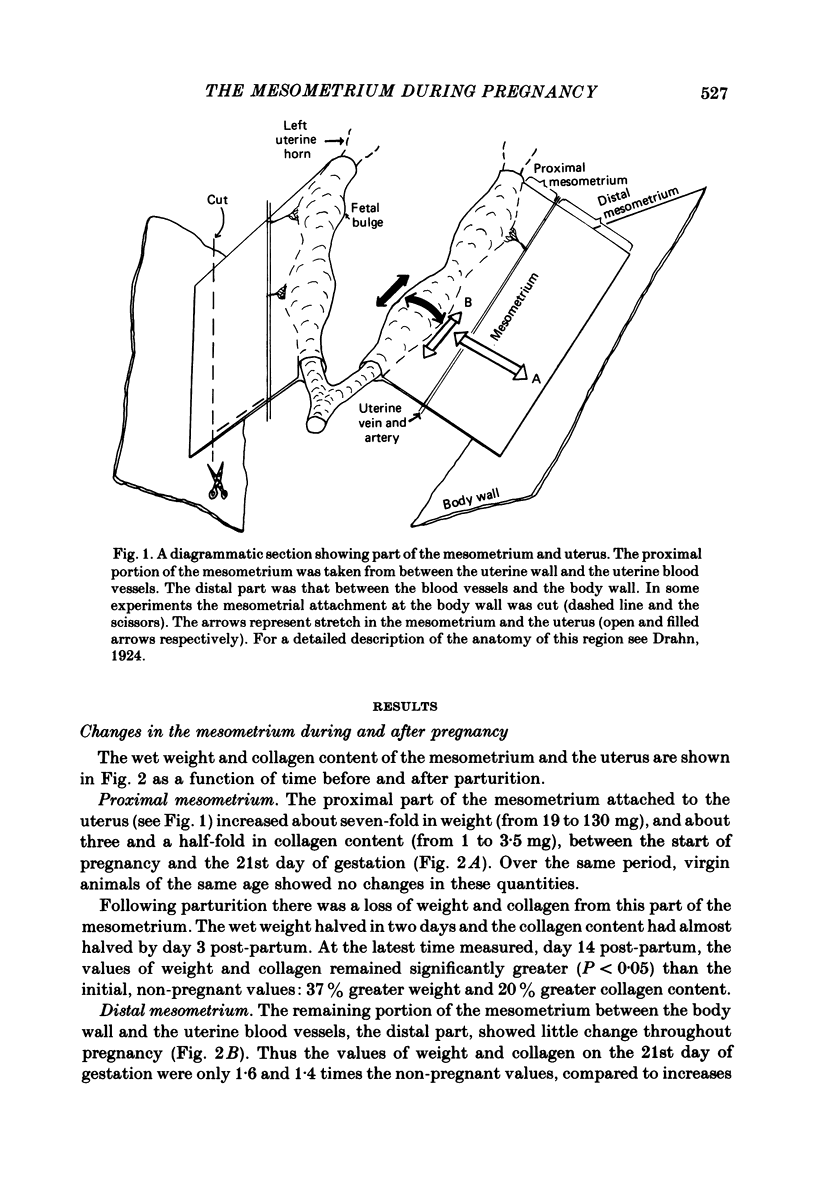
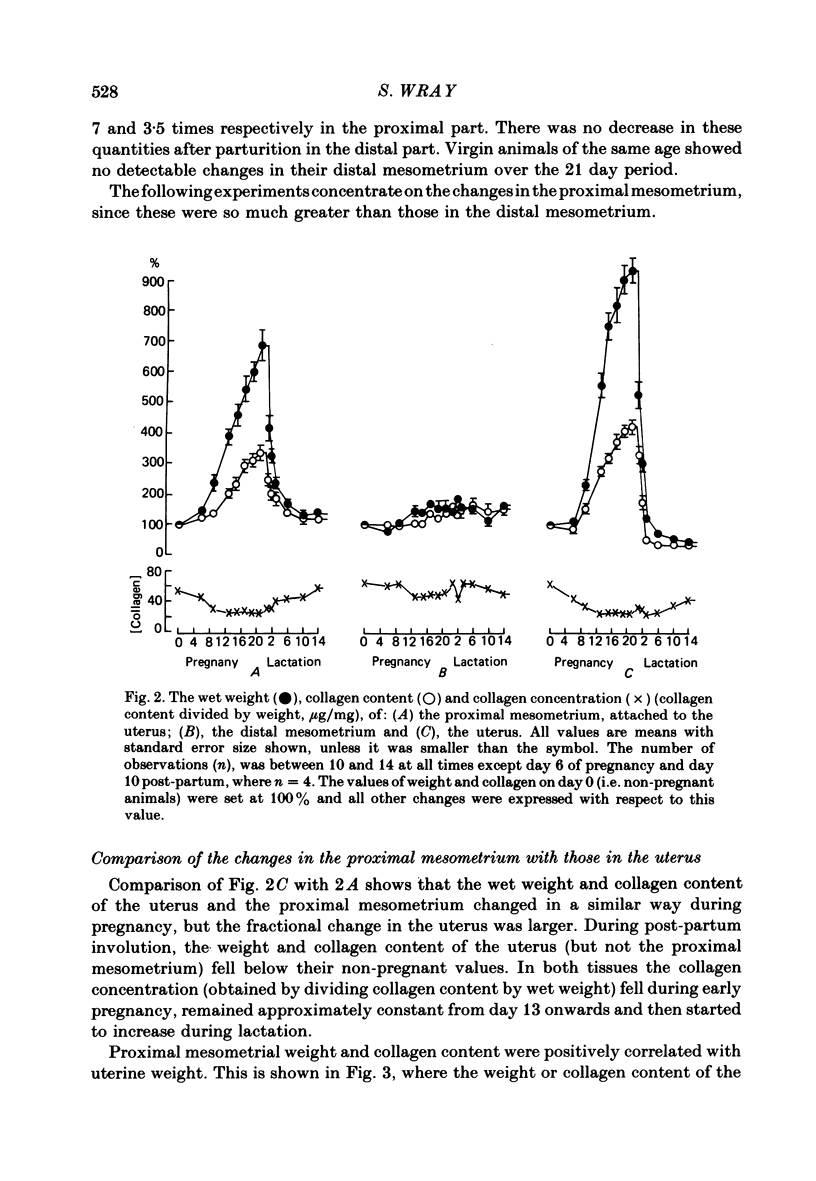
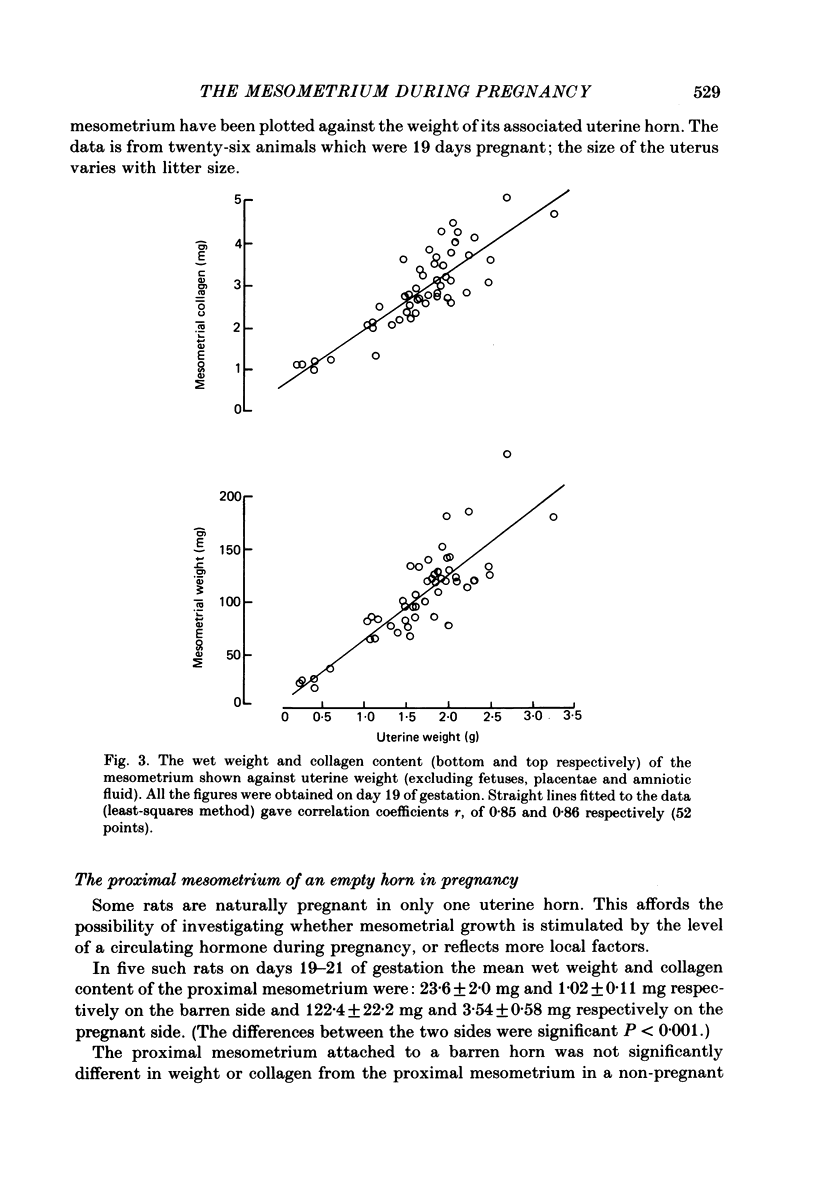
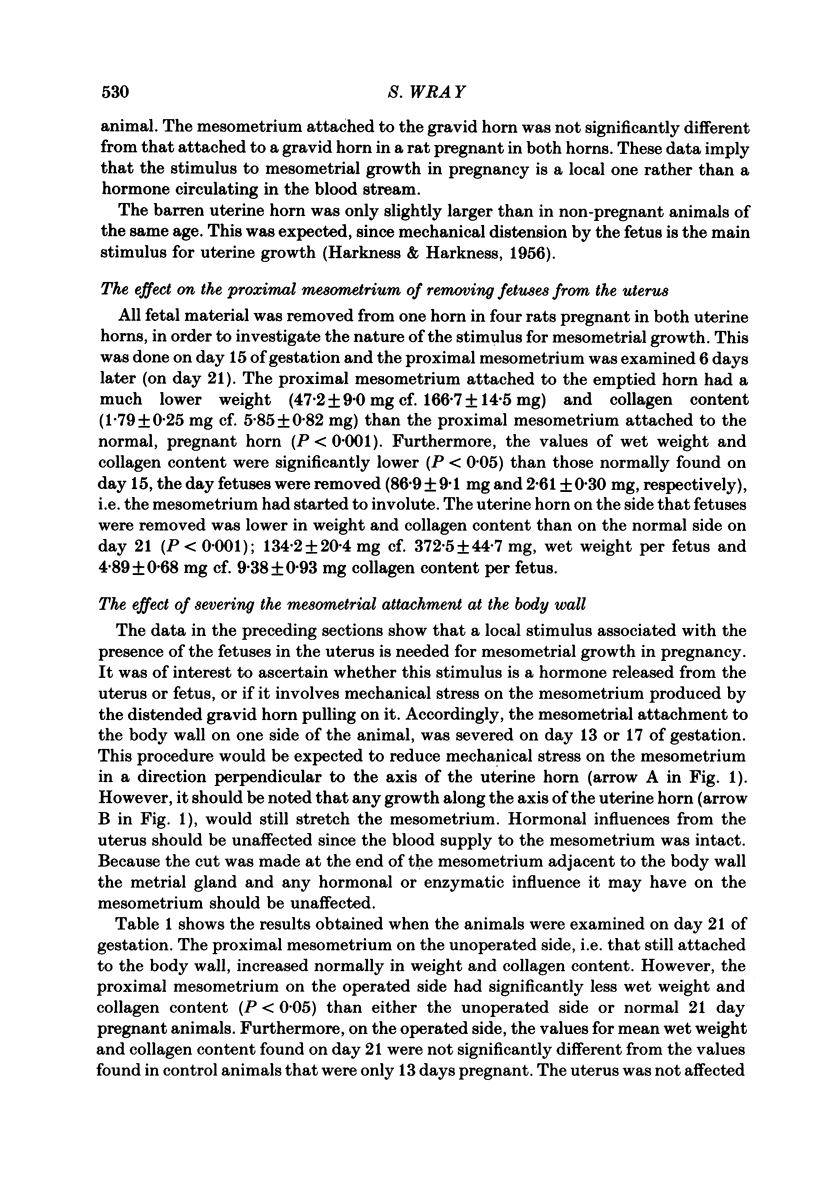
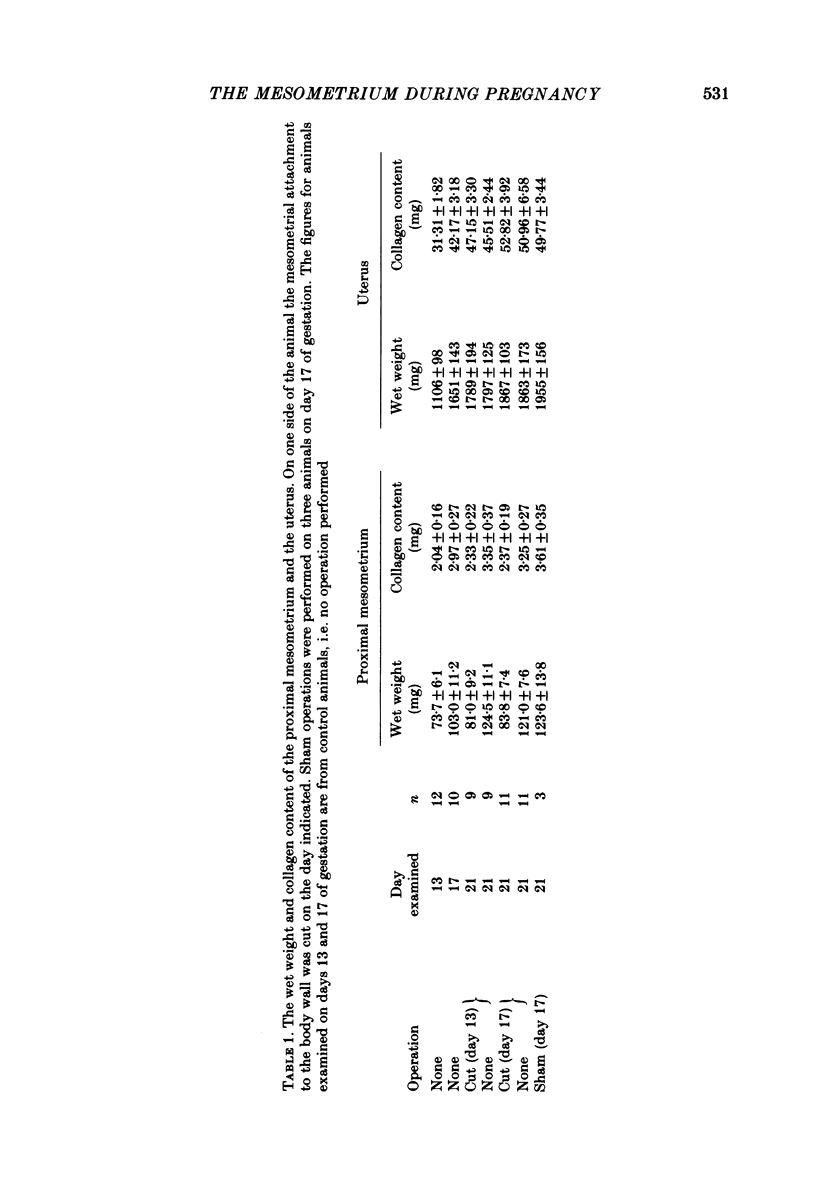
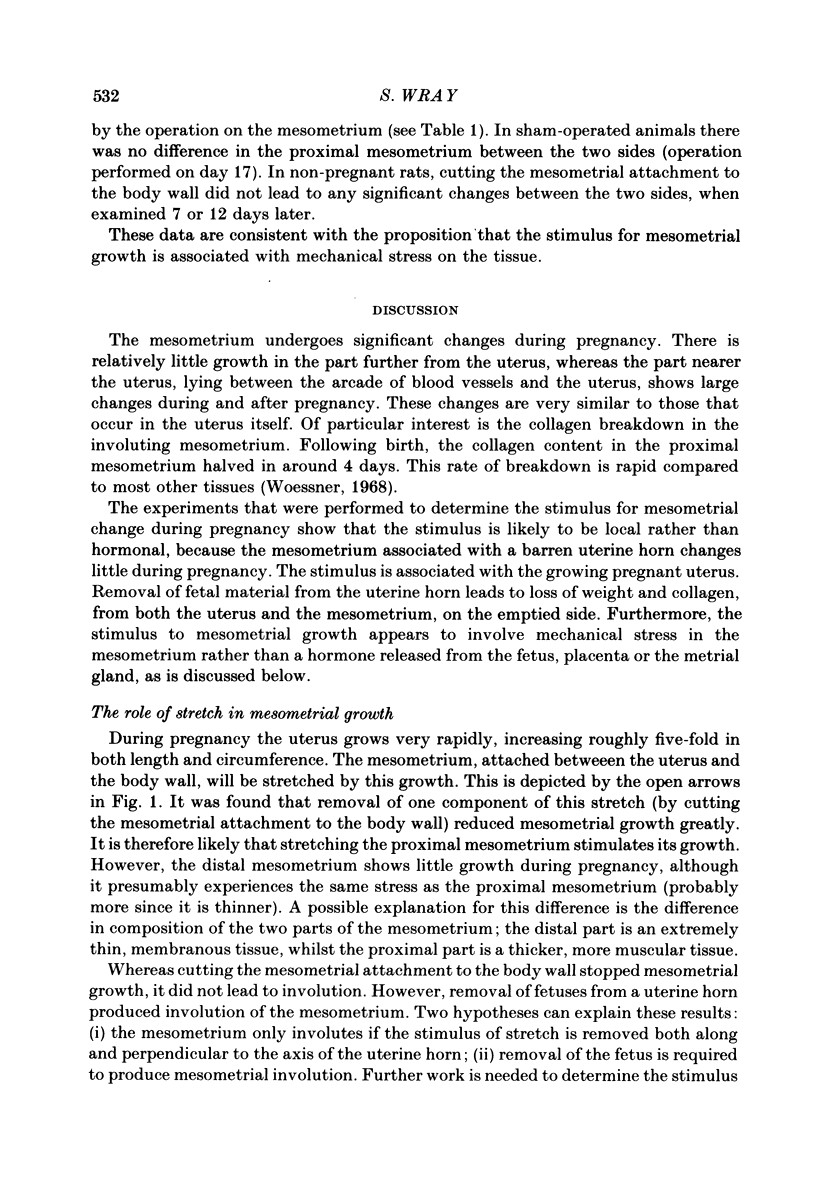
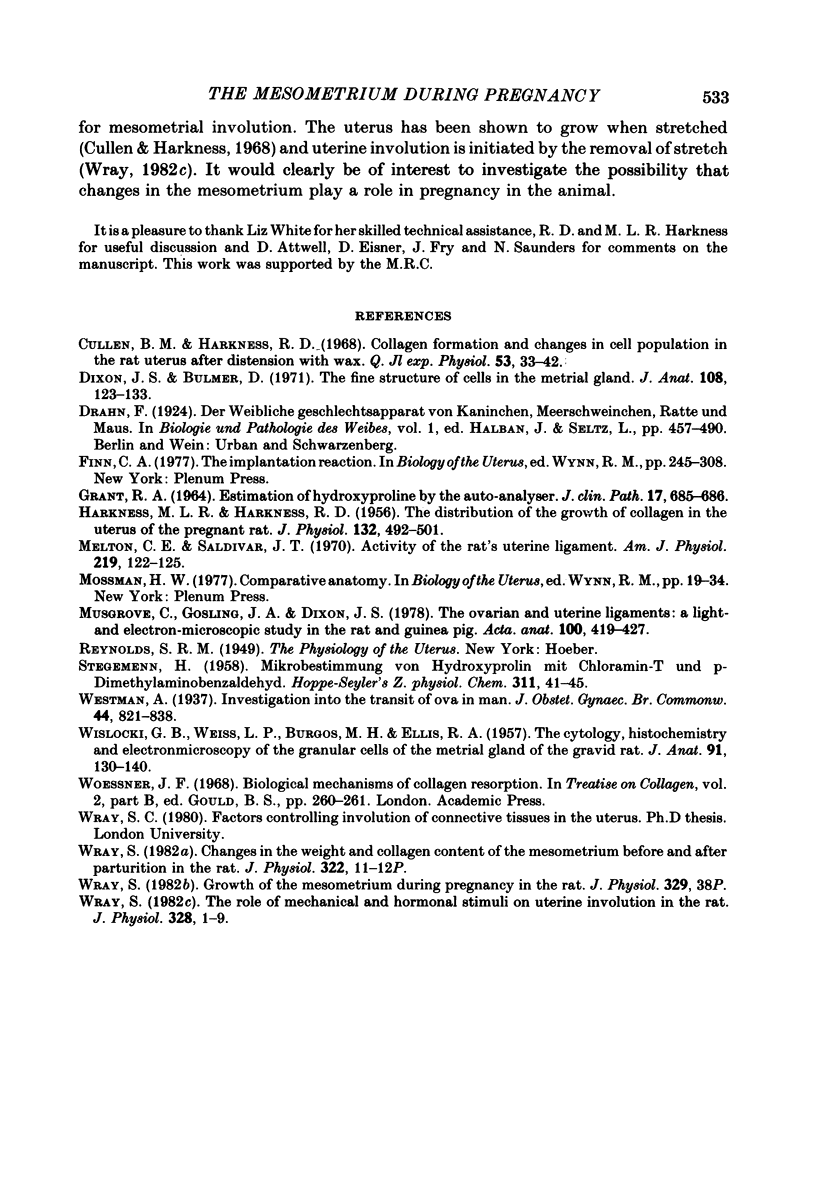
Selected References
These references are in PubMed. This may not be the complete list of references from this article.
- Cullen B. M., Harkness R. D. Collagen formation and changes in cell population in the rat's uterus after distension with wax. Q J Exp Physiol Cogn Med Sci. 1968 Jan;53(1):33–42. doi: 10.1113/expphysiol.1968.sp001943. [DOI] [PubMed] [Google Scholar]
- Dixon J. S., Bulmer D. The fine structure of cells in the rat metrial gland. J Anat. 1971 Jan;108(Pt 1):123–133. [PMC free article] [PubMed] [Google Scholar]
- GRANT R. A. ESTIMATION OF HYDROXYPROLINE BY THE AUTOANALYSER. J Clin Pathol. 1964 Nov;17:685–686. doi: 10.1136/jcp.17.6.685. [DOI] [PMC free article] [PubMed] [Google Scholar]
- HARKNESS M. L., HARKNESS R. D. The distribution of the growth of collagen in the uterus of the pregnant rat. J Physiol. 1956 Jun 28;132(3):492–501. doi: 10.1113/jphysiol.1956.sp005542. [DOI] [PMC free article] [PubMed] [Google Scholar]
- Melton C. E., Jr, Saldivar J. T., Jr Activity of the rat's uterine ligament. Am J Physiol. 1970 Jul;219(1):122–125. doi: 10.1152/ajplegacy.1970.219.1.122. [DOI] [PubMed] [Google Scholar]
- Musgrove C., Gosling J. A., Dixon J. S. The ovarian and uterine ligaments: a light- and electron-microscopic study in the rat and guinea pig. Acta Anat (Basel) 1978;100(4):419–427. doi: 10.1159/000144926. [DOI] [PubMed] [Google Scholar]
- STEGEMANN H. Mikrobestimmung von Hydroxyprolin mit Chloramin-T und p-Dimethylaminobenzaldehyd. Hoppe Seylers Z Physiol Chem. 1958;311(1-3):41–45. [PubMed] [Google Scholar]
- WISLOCKI G. B., WEISS L. P., BURGOS M. H., ELLIS R. A. The cytology, histochemistry and electron microscopy of the granular cells of the metrial gland of the gravid rat. J Anat. 1957 Jan;91(1):130–140. [PMC free article] [PubMed] [Google Scholar]
- Wray S. The role of mechanical and hormonal stimuli on uterine involution in the rat. J Physiol. 1982 Jul;328:1–9. doi: 10.1113/jphysiol.1982.sp014249. [DOI] [PMC free article] [PubMed] [Google Scholar]


